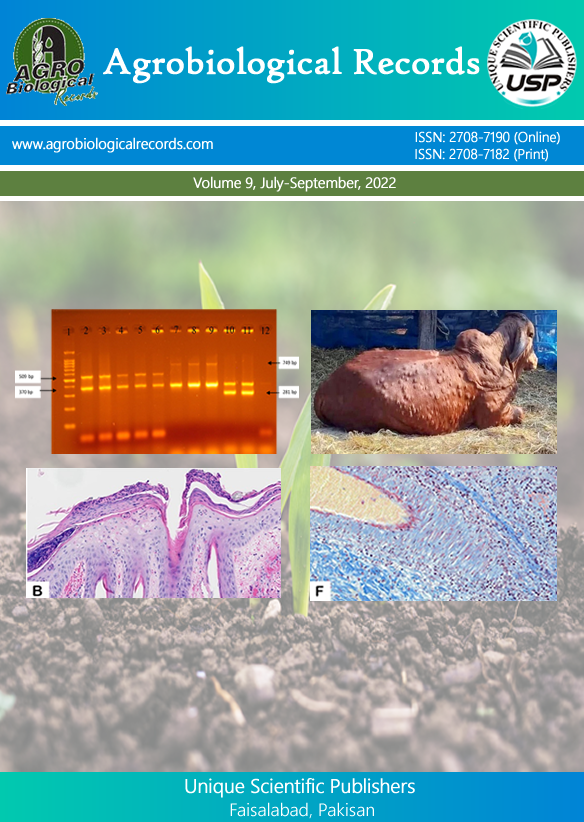
MarÃa Valeria Coniglio 1, MarÃa Julieta Luna 1,3, Pedro Provensal 1, Santiago Watson 1, MarÃa Eugenia Ortiz 1, Héctor Ricardo Ludueña 2, Lilia Cavaglieri 3,4* and Alejandra Paola Magnoli 1,3
1Departamento de Producción Animal, Facultad de AgronomÃa y Veterinaria, Universidad Nacional de RÃo Cuarto, Ruta 36 km 601, (X5804BYA) RÃo Cuarto, Córdoba, Argentina 2Facultad de Ciencias Veterinarias y Ambientales, Universidad Juan AgustÃn Maza, Lateral Sur del Acceso Este 2245, M5519, Mendoza, Argentina 3Member of Consejo Nacional de Investigaciones CientÃficas y Tecnológicas (CONICET), Buenos Aires, C1425FQB, Argentina 4Departamento de MicrobiologÃa e InmunologÃa. Facultad de Ciencias Exactas FisicoquÃmicas y Naturales, Universidad Nacional de RÃo Cuarto. Ruta 36 km 601, (X5804BYA) RÃo Cuarto, Córdoba, Argentina
*Corresponding author: lcavaglieri@exa.unrc.edu.ar
In ruminants, the probiotics stimulate rumen fermentation, fed digestibility, degradability, and rumen microbiota. This study aims to evaluate the adaptation and performance of post-weaning calves and cull cows by the inclusion of probiotic Saccharomyces cerevisiae var. boulardii RC009 to food. Lyophilized. S. boulardii (1 x 1010 CFU/g) (50g) was mixed with the diet to obtain 5 x 1011 CFU/T. Dietary treatments were, T1- control (without probiotic), T2 - Probiotic (with probiotic). Experiment 1: 50 six-month-old, weaned calves (Aberdeen Angus – Hereford F1 Cross). The assay started when they were 7-8 months old and, between 130-146kg initial weights. Animals were weighed and divided into 2 groups (25 animals each). The dietary treatments were used for 35 days from weaning. Experiment 2: 80 six-month-old cross-cull cows (Aberdeen Angus – Hereford) with an initial weight between 427-456kg. Animals were separated into 2 groups (40 animals each). Dietary treatments were applied for 22 days. The productive parameters were determined at 35 days in each animal as an experimental unit. These parameters from the experiments showed that weight gain (WG) and daily weight gain (DWG) were significantly better in animals that received the probiotic additive, showing around 5 times greater WG. Feed Conversion was lower in animals supplemented with the probiotic additive, showing best efficiency. Moreover, control cull cows had similar WG, regardless of the breed. However, animals treated with probiotics, mainly those from Aberdeen Angus and Hereford breeds, had significantly higher WG. This is the first time that an S. boulardii RC009-based product demonstrated to be effective in improving productive parameters in both calves subjected to wean stress and cull cows. A positive impact on the reduction of costs related to the feeding of animals should be obtained since an increase in DWG was correlated with an improvement in feed conversion rate (FCI).